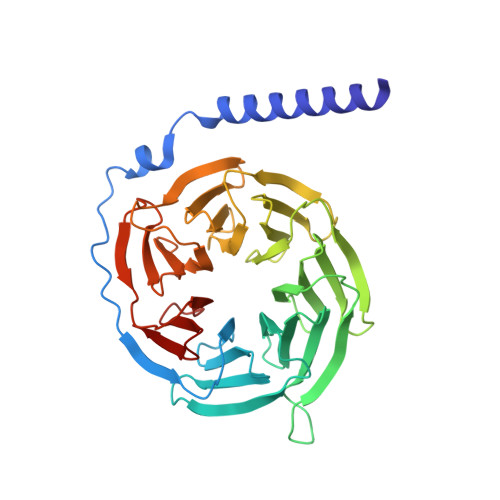Cholesterol-dependent dynamic changes in the conformation of the type 1 cholecystokinin receptor affect ligand binding and G protein coupling.
Harikumar, K.G., Zhao, P., Cary, B.P., Xu, X., Desai, A.J., Dong, M., Mobbs, J.I., Toufaily, C., Furness, S.G.B., Christopoulos, A., Belousoff, M.J., Wootten, D., Sexton, P.M., Miller, L.J.(2024) PLoS Biol 22: e3002673-e3002673
- PubMed: 39083706
- DOI: https://doi.org/10.1371/journal.pbio.3002673
- Primary Citation of Related Structures:
9BKJ, 9BKK - PubMed Abstract:
Development of optimal therapeutics for disease states that can be associated with increased membrane cholesterol requires better molecular understanding of lipid modulation of the drug target. Type 1 cholecystokinin receptor (CCK1R) agonist actions are affected by increased membrane cholesterol, enhancing ligand binding and reducing calcium signaling, while agonist actions of the closely related CCK2R are not. In this work, we identified a set of chimeric human CCK1R/CCK2R mutations that exchange the cholesterol sensitivity of these 2 receptors, providing powerful tools when expressed in CHO and HEK-293 model cell lines to explore mechanisms. Static, low energy, high-resolution structures of the mutant CCK1R constructs, stabilized in complex with G protein, were not substantially different, suggesting that alterations to receptor dynamics were key to altered function. We reveal that cholesterol-dependent dynamic changes in the conformation of the helical bundle of CCK receptors affects both ligand binding at the extracellular surface and G protein coupling at the cytosolic surface, as well as their interrelationships involved in stimulus-response coupling. This provides an ideal setting for potential allosteric modulators to correct the negative impact of membrane cholesterol on CCK1R.
Organizational Affiliation:
Department of Molecular Pharmacology and Experimental Therapeutics, Mayo Clinic, Scottsdale, Arizona, United States of America.




















